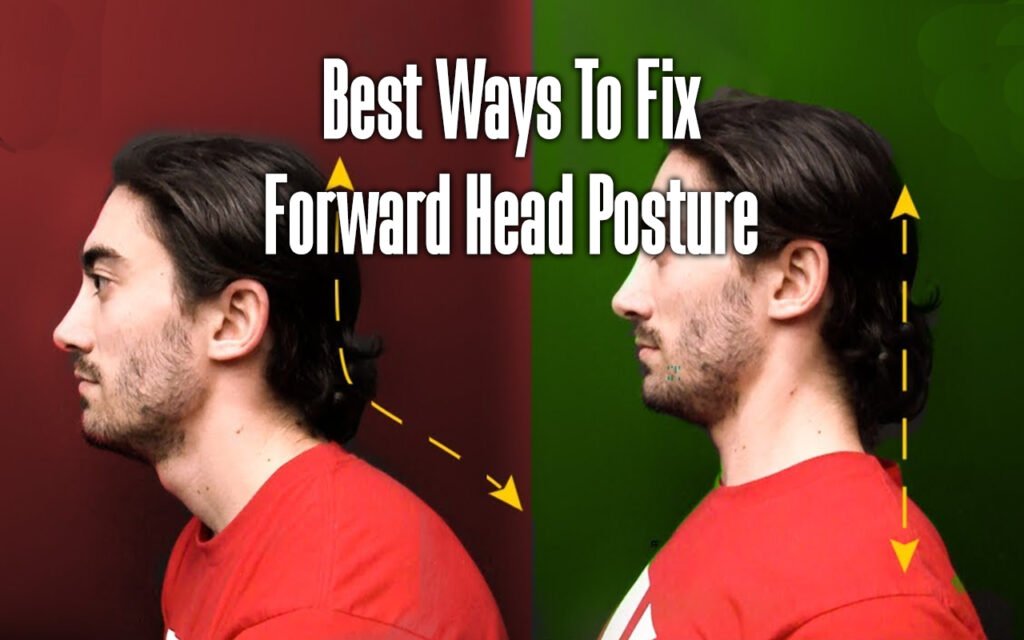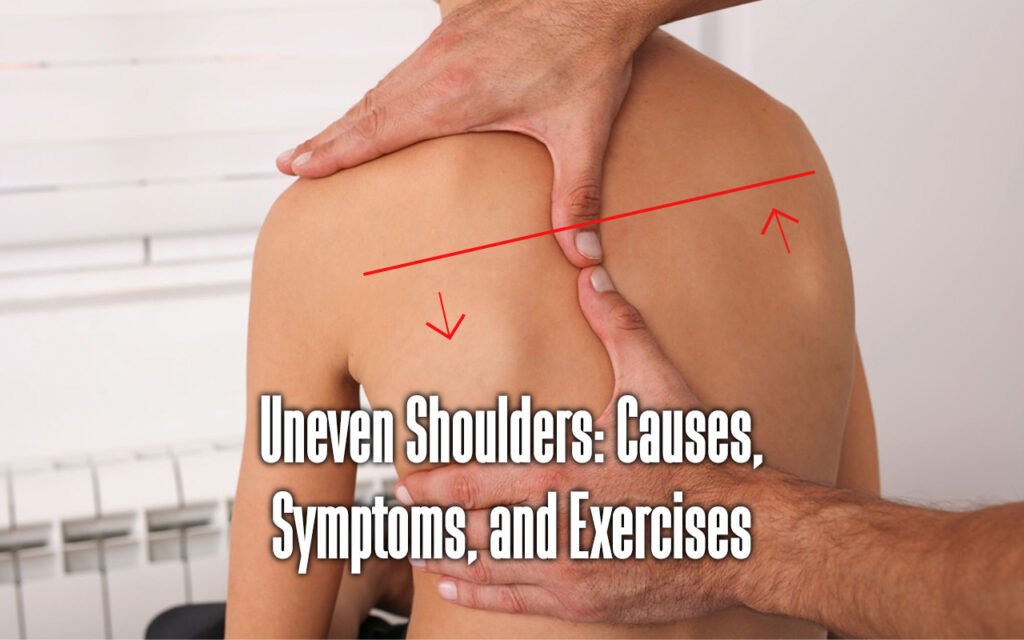[Updated on 1 January 2024] Even when not carrying weight, it’s estimated that around 20% of individuals have flat feet, which means their arches are weak or non-existent. In this post, we’ll look at the most typical causes and symptoms of flat feet and easy exercises to help restore your flat feet at home. We’ll look at some of the finest solutions available on the market to assist with this prevalent posture problem. What are Flat Feet? Flatfoot is a condition where either one or both feet have very little to no arch, also known as having flat feet. When you are standing, your foot’s pads make contact with the ground. The foot’s arch is usually not visible, but it may become visible when you lift your foot. At birth, it is common for babies to have flat feet, which usually develop arches by age 6. As adults, around 20%…
Best Exercises to Fix Your Posterior Pelvic Tilt
[Updated on 1 January 2024] The posterior pelvic tilt, also known as flat back syndrome, is a condition that occurs when the pelvis tilts backward, causing the lower back to flatten. This can lead to lower back pain, poor posture, and decreased mobility. Fortunately, there are several ways to fix posterior pelvic tilt. Regular exercise is one of the most effective ways to fix posterior pelvic tilt. You can perform exercises like hip flexor stretches, glute bridges, and pelvic tilts to enhance your posture and strengthen the muscles in your pelvic area. In addition, exercises that strengthen the core and lower back muscles can also be beneficial. Correcting posture can also be an effective method for addressing posterior pelvic tilt. This involves being aware of your daily posture and making minor adjustments. This can include sitting up straight, standing tall, and keeping your shoulders back. Addressing any underlying issues contributing…
Best Exercises You Can Do To Correct Swayback Posture
[Updated on 1 January 2024] Swayback posture, lordosis or hyperlordosis, is a postural deviation characterized by an exaggerated inward curvature of the lower back. This condition causes the pelvis to tilt forward, resulting in an increased arch in the lumbar spine. While swayback posture is not inherently beneficial, understanding its implications and implementing appropriate measures can help individuals address related issues and improve their overall posture and well-being. Swayback posture can arise from various factors, including poor posture habits, muscle imbalances, certain medical conditions, and structural abnormalities. It can lead to multiple symptoms, such as lower back pain, hip discomfort, limited mobility, and an altered gait pattern. Additionally, this posture can negatively impact the alignment of the entire spine, leading to imbalances in other regions, such as the thoracic spine, neck, and shoulders. Addressing swayback posture involves a multifaceted approach that includes postural correction, strengthening and stretching exercises, and lifestyle…
Upper Back Stretches for Back Pain Relief
Upper Back Stretches are an important exercise in relieving Back Pain, and there are various exercises to get relief from back pain. As you spend a great deal of time slouched in front of your computer at work, chances are that you’ve experienced tension and stiffness in your upper back. Despite regular exercise, it can be almost impossible to dodge the stiff neckedness that comes with today’s working atmosphere. Are you experiencing any form of back or shoulder pain? It is the result of continuously sitting in an unhealthy posture for extended periods. When muscles become tense and tight, they can constrict blood flow to the brain, causing a negative impact on your mood, focus, and cognitive abilities. This post dives into the details of how you can loosen your muscles and reduce pain. You will discover straightforward techniques and stretches of myofascial release that target your upper back muscles,…
Best Ways To Fix Forward Head Posture
[Updated on 1 January 2024] Forward head posture, which is also known as “text neck” or “computer neck,” is becoming an increasingly common problem in our digital age. This posture involves the head being pushed forward from its ideal position, causing strain on the neck and upper back muscles. Over time, this can lead to chronic pain, headaches, and other health issues. Fortunately, there are ways to fix forward head posture through exercises, stretches, and changes in daily habits. In this article, we’ll explore effective techniques for correcting this posture and improving overall neck and back health. What is Forward Head Posture? Forward head posture (FHP) is a condition in which the head protrudes forward from its ideal position, causing the shoulders to hunch forward and the upper back to round. In a healthy posture, the head should be aligned with the spine, with the ears over the shoulders and…
Best Ways To Fix Lateral Pelvic Tilt
Updated on 1 May 2023] The lateral pelvic tilt, also known as pelvic obliquity, is a condition characterized by an uneven alignment of the pelvis, which results in one hip being higher than the other. This misalignment can cause problems, such as uneven joint wear and tear, muscle imbalances, and postural issues. This can occur for various reasons, including leg length discrepancies, scoliosis, muscular imbalances, and poor posture. While the condition can be painful and limit mobility, several treatment options are available to alleviate symptoms and improve pelvic alignment. Causes of Lateral Pelvic Tilt Lateral pelvic tilt refers to the uneven positioning of the pelvis, where one side is higher than the other. There can be several causes of lateral pelvic tilt, including: Muscle imbalances- Tight or weak muscles on one side of the pelvis can cause it to tilt to that side. For example, tight hip flexors or quadriceps on…
How to Get Rid of Rounded Shoulders
[Updated on 1 May 2023] In today’s time, it is easier than ever to develop bad posture. Your default positions, such as slouching at your desk, lounging on your couch, or hunching over your phone, may cause painful issues like rounded shoulders and potentially more severe conditions if you continue these poor posture habits in the long term. You had a scientific reason for telling you to maintain good posture while growing up, and it wasn’t just a random request. In today’s digital age, we tend to develop bad posture due to our daily activities. Therefore, “unrounding” our shoulders could greatly benefit many of us. Rounded shoulders can cause upper back, neck, and shoulder stiffness, as well as a neck hump or text/tech neck, due to excess phone use and poor posture. If you observe that you are bending forwards or your shoulders collapsing while standing, do not worry, but…
Uneven Shoulders: Causes, Symptoms, and Exercises
[Updated on 1 May 2023] Uneven shoulders, also known as shoulder asymmetry, are the most common issue that can cause discomfort and affect one’s appearance. This condition can occur due to a variety of reasons, such as poor posture, muscle imbalances, scoliosis, or injuries. While some people may not experience any noticeable symptoms, others may experience pain, limited range of motion, or muscle weakness. Fortunately, there are many ways to fix uneven shoulders, ranging from corrective exercises, stretches, and postural adjustments to medical treatments and physical therapy. In this article, we will describe what is most likely the reason behind uneven shoulders and what you should do to correct it. Causes of Uneven Shoulders Uneven shoulders can be caused by a variety of factors, including: Poor posture: Poor posture, especially while sitting or standing for extended periods, can cause muscle imbalances in the shoulders and back, leading to uneven shoulders. Scoliosis: Scoliosis…
How To Correct Upper Crossed Syndrome
[Updated on 1 May 2023] Upper Crossed Syndrome (UCS) is a condition that affects the muscles and joints of the upper body, specifically the neck, shoulders, and upper back. It is caused by a combination of muscular imbalances and poor posture, often due to long hours spent sitting and staring at screens. UCS can lead to various unpleasant symptoms, including chronic pain, headaches, and decreased range of motion. Fortunately, there are several effective methods for fixing Upper Crossed Syndrome. These may include targeted exercises to strengthen weak muscles, stretching to release tight ones, and lifestyle changes to improve posture and reduce screen time. With a little effort and dedication, it’s possible to alleviate the symptoms of UCS and restore balance to the upper body. In this article, we’ll explore the most effective exercises for fixing Upper Crossed Syndrome. We provide practical advice for anyone looking to correct their posture and…
Best Ways To Fix Dowager’s Hump
[Updated on 1 May 2023] The Dowagers hump used to be a posture that was only observed in older women. The name itself adds to the impression; for example, a “Dowager” is an elderly woman who has lost her husband. However, the hump of a Dowager is now seen among young people and even toddlers. Dowager’s humps are lumps or bumps that develop at the base of the back of the neck, where the spine has bent forward. While it’s normal to have a little curve on the 7th vertebrae of the neck, a Dowager’s hump is caused by an abnormal one that is more exaggerated. Various factors can cause a Dowager’s hump, but the most common cause is poor posture. If you have a Dowager’s hump because of poor posture, this is an article you should read. We’ll go through what a Dowager’s hump is, why it happens, and what…











